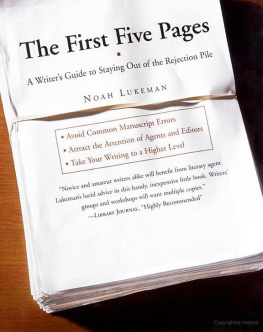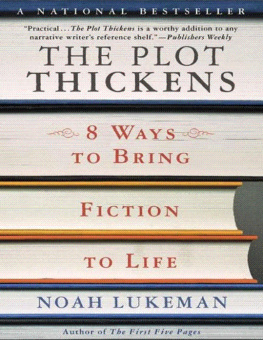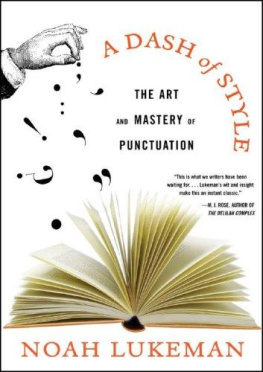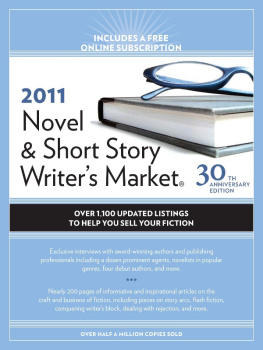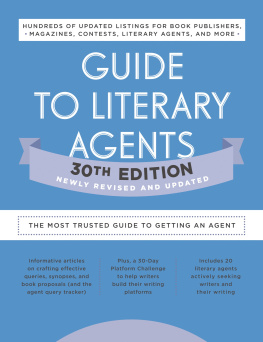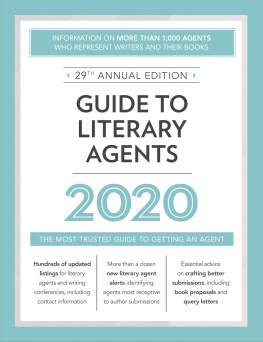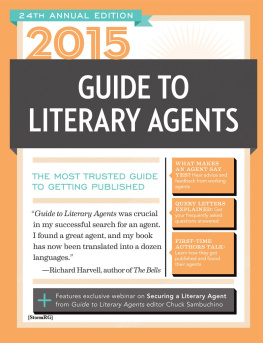Contents
PART I: PRELIMINARY PROBLEMS
Chapter 1: Presentation 21
Chapter 2: Adjectives and Adverbs 31
Chapter 3: Sound 41
Chapter 4: Comparison 53
Chapter 5: Style 64
PART II: DIALOGUE
Chapter 6: Between the Lines 75
Chapter 7: Commonplace 84
Chapter 8: Informative 91
Chapter 9: Melodramatic 101
Chapter 10: Hard to Follow 108
PART III: THE BIGGER PICTURE
Chapter 11: Showing Versus Telling 119
Chapter 12: Viewpoint and Narration 127
Chapter 13: Characterization 136
Chapter 14: Hooks 151
Chapter 15: Subtlety 159
Chapter 16: Tone 165
Chapter 17: Focus 170
Chapter 18: Setting 178
Chapter 19: Pacing and Progression 186
Index 199
Introduction
M ost people are against books on writing on principle. So am I. It's ridiculous to set down rules when it comes to art. Most of the truly great artists have broken all the rules, and this is precisely what has made them great. What would have become of Beethoven's music if he'd chased rules instead of inspiration? Of van Gogh's paintings?
There are no rules to assure great writing, but there are ways to avoid bad writing. This, simply, is the focus of this book: to learn how to identify and avoid bad writing. We all fall prey to it, to different degrees, even the greatest writers, even in the midst of their greatest works. By scrutinizing the following examples of what not to do, you will learn to spot these ailments in your own writing; by working with the solutions and exercises, you may, over time, bridge the gap and come to a realization of what to do. There is no guarantee that you will come to this realization, but if you do, at least it will be your own. Because ultimately, the only person who can teach you about writing is yourself.
People are afraid to admit they'd dismiss a work of art instantaneously, whether it's the first five pages of an unsolicited manuscript or the first five pages of Faulkner. But the truth is they do. When it's a "classic," most read on and finish the book to keep up pretext and not seem so presumptuous as to pass instant judgment on a great work. But they've secretly made up their mind after page 5, and 99 percent of the time, they're not going to change it. It is not unlike the person who walks into a museum and dismisses van Gogh in the flash of an eye; he would be scorned by critics, probably called a fool, but ultimately art is art, and this person has the right to pass his own judgment whether he's stared at it for a second or for a year.
In truth, though, this book is not concerned with the argument of whether one should dismiss a work of art instantaneouslythis we'll leave to sophistsbut rather, more simply, with whether a work is technically accomplished enough to merit a serious artistic evaluation to begin with. It is not like walking into a museum and judging the van Goghs and Rem-brandts; it is like walking into an elementary school art fair and judging which students exhibit more technical skill than others. An artistic evaluation is another, largely subjective can of worms. This book's objective is much simpler, much more humble. It is like a first reader who has been hired to make two piles of manuscripts, one that should be read beyond the first five pages and one that shouldn't. Ninety-nine percent of today's unsolicited manuscripts will go into the latter. This book will tell you why.
When most professional literary agents and book editors hear the title of this book, they grab my arm, look me in the eyes and say, "Thank you." I can see their pent-up frustration at wanting to say so many things to writers and simply not having the time. I've come to understand this frustration over the last few years as I've read thousands of manuscripts, all, unbelievably, with the exact same type of mistakes. From Texas to Oklahoma to California to England to Turkey to Japan, writers are doing the exact same things wrong. While evaluating more than ten thousand manuscripts in the last few years, I was able to group these mistakes into categories; eventually, I was able to set forth definite criteria, an agenda for rejecting manuscripts. This is the core of The First Five Pages: my criteria revealed to you.
Thus, despite its title, this book is not just about the first five pages of your manuscript; rather, it assumes that by scrutinizing a few pages closely enoughparticularly the first few you can make a determination for the whole. It assumes that if you find one line of extraneous dialogue on page 1, you will likely find one line of extraneous dialogue on each page to come. This is not a wild assumption. Think of another art formmusic, for example. If you listen to the first five minutes of a piece of music, you should be able to evaluate a musician's technical skill. A master musician would scoff at even that, saying he could evaluate a fellow musician's skill in five seconds, not five minutes. The master musician, through diligence and patience, has developed an acute enough ear to make an instant evaluation. This book will teach you the step-by-step criteria so that you, too, may develop that acute ear and make instant evaluations, be it of your own writing or of someone else's. By its end, you'll come to see why this book should not have been titled The First Five Pages but The First Five Sentences.
Agents and editors don't read manuscripts to enjoy them; they read solely with the goal of getting through the pile, solely with an eye to dismiss a manuscriptand believe me, they'll look for any reason they can, down to the last letter. I have thus arranged the following chapters in the order of what I look for when trying to dismiss a manuscript. You'll find that, unlike many books on writing, this book's perspective is truly that of the agent or editor.
Subsequently, I hope this book might also be useful to publishing professionals, particularly those entering the industry. Unlike other fields, publishing requires no advanced degrees; many neophytes, especially today, come straight from college or from media-related fields. Even if prospective agents or editors inherently know how to judge a manuscripteven if they have that "touch"in most cases they still won't be able to enunciate their reasoning beyond a vague "this manuscript doesn't hold my interest." It is crucial they know their precise reasons for rejecting a manuscript if they even mean to talk about them intelligently. This book will help them in this regard. Everyone will ultimately develop his own order of elimination, his own personal pet peeves, and thus this book does not pretend to be the last word on the issue; but in its nineteen chapters, it covers many of the major points of a manuscript's initial evaluation.
Young publishing professionals must also keep in mind that, in some rare cases, the first five pages might be awful and the rest of the manuscript brilliant (and vice versa). They should thus not always keep too rigidly to the criteria and should also employ what I call the three-check method, which is, if the first five pages look terrible, check the manuscript a second time, somewhere in the middle, and then again a third time, somewhere toward the end. (It is extremely unlikely you will open to the only three terrible points in the manuscript.) This method should especially be employed if you are evaluating manuscripts for the first time and should be used until you feel supremely confident in the evaluation process.
The main audience for this book, though, is you, the writer. Along with the criteria, this book offers an in-depth look at the technique and thought processes behind writing and has been designed to be of interest to the beginning and advanced writer alike, both as a general read and as a reference and workbook. There is so much to know in writing that even if you do already know it all, there are bound to be some things that have fallen to the back of your mind, some things you can use being reminded of. There is a lot of advice in this book; some you might use, some you might disagree with. Such is the nature of writing, which is, like all arts, subjective; all I can say is that if you walk away from these pages with even one idea that helps you with even one word of your writing, then it's been worth it. In the often frustrating business of writingworkshops, conferences, books, articles, seminarsthis is a helpful principle to keep in mind.
Next page
